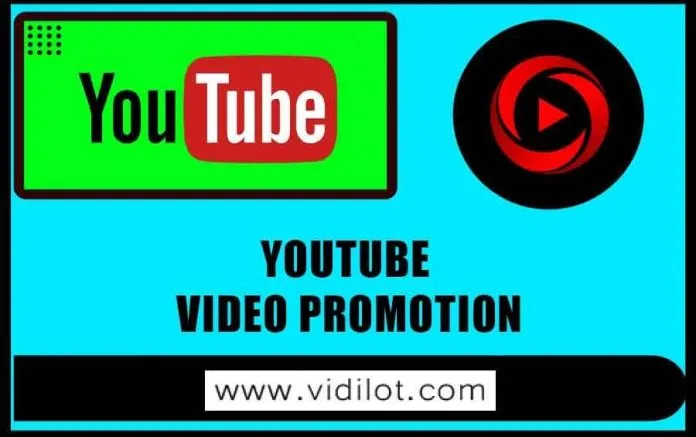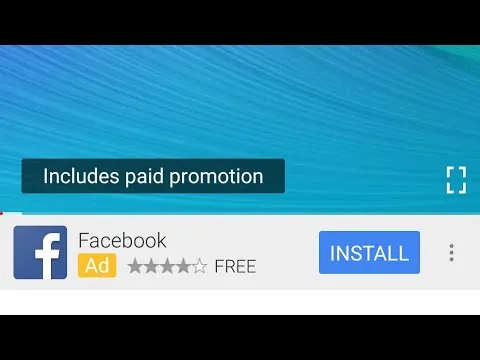In the digital age, YouTube has emerged as a powerhouse for content creators and brands alike. With millions of videos uploaded every day, standing out can be a daunting task. This is where YouTube's paid promotion tools come into play. By leveraging these options, creators can enhance their visibility, reach targeted audiences, and ultimately drive engagement. In this post, we’ll dive into the various paid promotion tools
Understanding YouTube's Paid Promotion Options

YouTube provides several paid promotion options that cater to different marketing needs and budgets. Here’s a breakdown of the primary tools available:
- TrueView Ads: These are skippable ads that appear before or during videos. Advertisers only pay when viewers watch at least 30 seconds or the entire ad if it's shorter. This format encourages engagement and helps brands connect with an interested audience.
- Non-Skippable Ads: As the name suggests, these ads cannot be skipped and typically run for 15-20 seconds. While they guarantee that viewers will see the message, they may lead to a more negative viewer experience if overused.
- Bumper Ads: These are short, non-skippable ads lasting up to 6 seconds. They are designed to increase brand awareness and can effectively reinforce a brand message quickly.
- Overlay Ads: These are small banner ads that appear on the lower portion of the video. They are less intrusive and allow viewers to engage with them without disrupting their viewing experience.
- Sponsored Cards: These allow advertisers to promote their products or services within relevant videos. They appear as small notifications and can drive traffic to a website or product page.
Each of these options serves a unique purpose and can be tailored to specific goals, whether that’s increasing brand awareness, driving traffic, or generating leads. Understanding these tools is the first step in creating an effective promotional strategy on YouTube.
Also Read This: How to Find Old Photos in Getty Images
How Paid Promotions Work on YouTube

YouTube's paid promotion tools are designed to help creators and businesses reach a wider audience by leveraging the platform's massive user base. But how do these promotions actually work? Let's break it down.
At its core, YouTube offers several paid promotion options, including:
- TrueView Ads: These are skippable video ads that appear before, during, or after other videos. Advertisers only pay when viewers watch at least 30 seconds of the ad or engage with it.
- Bumper Ads: These are short, non-skippable ads that last for six seconds. They’re perfect for creating brand awareness quickly.
- Overlay Ads: These are semi-transparent ads that appear in the lower portion of the video. They can be clicked to redirect viewers to the advertiser's website.
- Display Ads: These appear to the right of the video and can help drive traffic to your channel or website.
To set up a paid promotion, users need to create a Google Ads account and link it to their YouTube channel. Once set up, advertisers can select target demographics, interests, and even specific channels where they want their ads to appear. This targeting ensures that the ads are shown to the most relevant audiences, increasing the chances of engagement.
In summary, YouTube's paid promotions are a powerful way to enhance visibility and connect with potential customers. With various formats and targeting options, advertisers can find the right strategy to fit their goals.
Also Read This: How to Cancel a YouTube Subscription with Ease
Measuring the Success of YouTube Promotions
So, you've invested in YouTube's paid promotions—how do you know if it's worth it? Measuring the success of your promotions is crucial to understanding their effectiveness and optimizing future campaigns. Here are some key metrics to consider:
| Metric | Description | Importance |
|---|---|---|
| Views | The total number of times your ad was viewed. | Indicates overall reach and interest. |
| Click-Through Rate (CTR) | The percentage of viewers who clicked on your ad. | Measures engagement and ad effectiveness. |
| Cost Per Click (CPC) | The average cost you pay for each click on your ad. | Helps evaluate the return on investment (ROI). |
| Conversion Rate | The percentage of users who completed a desired action after clicking your ad. | Indicates how well your ad drives sales or sign-ups. |
In addition to these metrics, it’s also helpful to consider qualitative feedback, such as comments or reactions to your ad. Watching trends over time can provide insights into audience behavior and preferences.
Ultimately, a combination of quantitative data and qualitative feedback will give you a clearer picture of how successful your YouTube promotions are. By continuously measuring and analyzing these aspects, you can fine-tune your strategies to maximize impact and reach your goals.
Also Read This: How to Create a Match Rocket with a Fun DIY Craft
5. Case Studies: Success Stories and Failures
When it comes to understanding the effectiveness of YouTube's paid promotion tools, examining real-world examples can be incredibly insightful. Let’s dive into a few case studies that highlight both the triumphant successes and the sobering failures.
Success Stories:
- Case Study: Blendtec - This company became famous for its "Will It Blend?" series, where they blended various everyday items in their powerful blenders. By utilizing YouTube's paid promotion tools, they reached a wider audience, resulting in a 700% increase in sales over a few years. Their engaging and entertaining content, combined with targeted ads, made them a household name.
- Case Study: Dollar Shave Club - Another brilliant example is Dollar Shave Club, which started with a humorous video that went viral. They invested in YouTube ads to amplify their reach. The result? Within 48 hours, they gained 12,000 new subscribers and an avalanche of media attention, leading to exponential growth.
Failures:
- Case Study: Pepsi - In a bid to promote a new product, Pepsi launched a controversial ad that didn’t resonate well with the audience. Despite a hefty investment in paid promotions, the backlash overshadowed the campaign, demonstrating that not all paid promotions yield positive results.
- Case Study: Fyre Festival - The infamous Fyre Festival used YouTube promotions to create hype but ultimately failed spectacularly. The promotional videos painted a picture of luxury that didn't match reality, leading to a disastrous event and a tarnished brand reputation.
These case studies illustrate that while YouTube’s paid promotion tools can drive incredible success, they also come with risks. Crafting a message that resonates with the audience is key to leveraging these tools effectively.
Also Read This: Can I Delete YouTube from My TV and How to Manage Apps
6. Benefits of Using YouTube's Paid Promotion Tools
So, why should you consider using YouTube's paid promotion tools? Well, there are several compelling benefits that can elevate your marketing strategy and expand your reach. Let's break them down!
- Targeted Reach: One of the biggest advantages is the ability to target specific demographics. You can tailor your ads based on age, gender, location, and even interests. This means your content reaches the people most likely to engage with it.
- Increased Visibility: With billions of users, YouTube is a massive platform. Paid promotions ensure that your videos appear in front of viewers who might not stumble upon them organically. This increased visibility can lead to more subscribers and higher engagement rates.
- Measurable Results: YouTube provides comprehensive analytics, allowing you to track the performance of your campaigns. You can see how many people viewed your ad, clicked through to your channel, or even made a purchase. This data is invaluable for refining your marketing strategy.
- Cost-Effectiveness: Compared to traditional advertising, YouTube ads can be relatively inexpensive. You can set a budget that suits your financial capabilities and still achieve significant exposure, making it accessible for small businesses and big brands alike.
- Creative Freedom: YouTube's platform allows for various ad formats, including skippable ads, non-skippable ads, and bumper ads. This variety lets you experiment with multiple approaches to see what resonates best with your audience.
In conclusion, utilizing YouTube’s paid promotion tools can provide substantial benefits for your marketing efforts. From targeted reach to measurable results, these tools can help you connect with your audience in meaningful ways and drive your brand’s growth!
Also Read This: A Comprehensive Guide to Getting Paid on Shutterstock
Common Challenges and Pitfalls
When diving into YouTube's paid promotion tools, it's essential to be aware of the common challenges and pitfalls that can derail your campaign. Understanding these can help you navigate the often complex landscape of online advertising more effectively.
- Lack of Targeting: One of the biggest mistakes is not utilizing the targeting options available. If you don’t narrow down your audience, your ads could reach people who have no interest in your content, leading to wasted spend.
- Ignoring Analytics: Many creators set up their promotions and then neglect to monitor the performance. Failing to analyze your metrics can result in missed opportunities for optimization and improvement.
- Underestimating Budgeting: It’s easy to underestimate how much you need to spend to see results. A small budget may not yield significant visibility or engagement, while overspending without a clear strategy can drain your resources.
- Not Having Clear Goals: Without defined objectives, you might find it challenging to measure success. Are you aiming for views, subscribers, or engagement? Clarity in your goals is crucial for effective promotion.
- Overlooking Creative Quality: Just because you’re paying for promotion doesn’t mean the content will resonate. Poor-quality creative can lead to high skip rates and low engagement.
- Ad Fatigue: If you run the same ad for too long, viewers may become desensitized. Regularly refreshing your content is key to maintaining interest.
By being aware of these challenges, you can better navigate the pitfalls and enhance the effectiveness of your YouTube paid promotions.
Conclusion: Is YouTube Promotion Worth It?
So, is investing in YouTube's paid promotion tools worth it? The answer isn't straightforward, but it largely depends on your goals, content, and audience. Here are some points to consider:
- Visibility: If you're looking to increase your visibility and reach a broader audience, YouTube promotion can be incredibly effective. The platform has a vast user base, allowing you to showcase your content to potential fans.
- Engagement: A well-targeted ad campaign can lead to higher engagement rates. When done right, you can convert viewers into subscribers and loyal followers.
- Return on Investment (ROI): While paid promotion requires an upfront investment, it can yield a good ROI if your content resonates with the audience. Analyze your metrics to ensure you're getting the most for your money.
- Long-Term Growth: Paid promotions can set the stage for long-term growth. They can help kickstart a channel, but sustainable success often requires consistent effort in content creation and audience engagement.
In conclusion, YouTube promotion can be a valuable tool if executed thoughtfully. By understanding the platform, recognizing its challenges, and aligning your goals, you can determine if the investment is right for you. It might just be the stepping stone your channel needs to reach new heights!